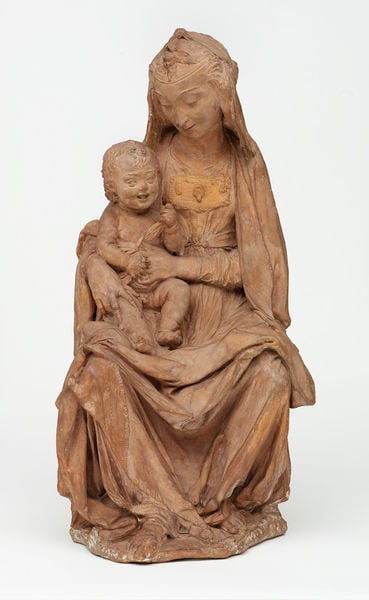Art World
An Italian Scholar Says He Has Identified Leonardo da Vinci’s Only Known Sculpture. Others Are Skeptical
The debate over who made the work has been raging for more than 100 years.

The debate over who made the work has been raging for more than 100 years.

Henri Neuendorf

An Italian scholar says a terracotta statuette in the collection of London’s Victoria & Albert Museum is by Leonardo da Vinci, even though the museum isn’t convinced.
According to the Art Newspaper, art history professor Francesco Caglioti of the University of Naples Federico II attributed the sculpture, known as The Virgin with the Laughing Child (ca. 1465), to the 15th-century master in an interview with an Italian newspaper. If he’s correct, it would be the only known sculpture by the Renaissance polymath in existence.
“There are a thousand details, which dispel any doubts regarding the attribution,” he told La Repubblica, zeroing in on the sculptures facial expressions and drapery.
Caglioti cited a similar approach to the faces in Leonardo’s 1503 painting The Virgin and Child with Saint Anne. Looking at the drapery, the art historian compared the sculpture to Leonardo’s 1472–75 painting The Annunciation. “Look at the robes of the Madonna and the red mantle of the Archangel,” he said. “The movement of the fabric is the same.”
The V&A’s online collection records describe the 19-inch figurine as one of “the most famous pieces ” in its possession. Over the years, the work has been attributed to various 15th-century Florentine artists, including Verrocchio, Leonardo da Vinci, and Desiderio da Settignano. At present, the museum attributes it to Antonio Rossellino.
Leonardo experts have expressed skepticism about the new attribution. “What is the evidence?” Frank Zollner, professor of Modern and Renaissance art at Leipzig University asked the Art Newspaper. “We do not have any sculptures made by Leonardo, so there is no comparison. And the smile? Already Ernst Gombrich pointed out that the Leonardo-type smile is a stock pile accessory which Leonardo inherited from Verrocchio.”
In an email to Artnet News, a spokesperson for the museum confirmed it is not changing its attribution at this time. “A potential attribution to Leonardo da Vinci was first proposed in 1899, so Professor Caglioti’s study opens up the discussion of its authorship afresh. The V&A welcomes ongoing discussion with colleagues worldwide; research into our collections is continuous.”
The work is scheduled to go on view as part of the first retrospective of Leonardo’s mentor, Andrea del Verrocchio (1435–1488) at the Palazzo Strozzi in Florence next month. The show travels to the National Gallery of Art in Washington, DC, in September.